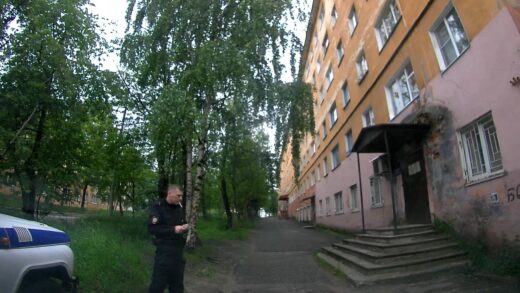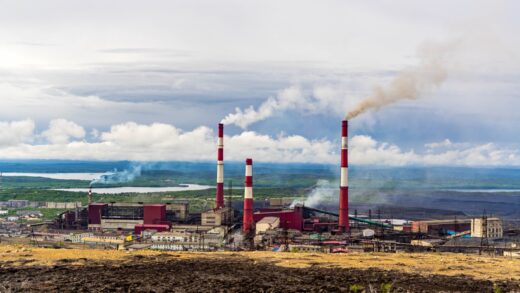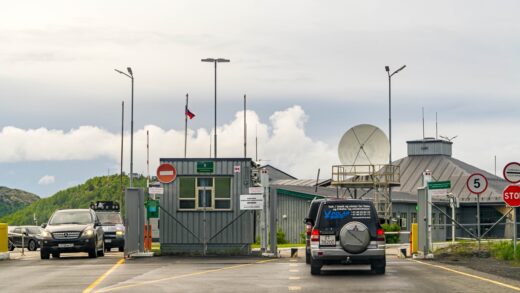Subtitle: Why the Russia-Ukraine conflict triggered a “tsunami” in the global aviation industry
The story (in Chinese) was first published in South Review Magazine, Issue 06/2022
This English version was translated from the Chinese original using DeepL, with the manual correction of some obvious mistranslations. I apologize for any mistakes made by this AI translation tool.
Featured picture credit to Robert Aardenburg@Unsplash
In recent times, the conflict between Russia and Ukraine has attracted the attention of the global public. But beyond the fighting in Ukraine, an “air war” between Russia and Western countries over civil flights is also taking place. The impact of this war on the global community may be more profound than the conflict itself, which is still confined to the two countries.
As early as February 22, the day after the declaration of “independence” of the two separatist regions of Donbas in eastern Ukraine, Russia closed some civil aviation routes in the Rostov FIR, which borders the region; then early on February 24, the same day it declared war on Ukraine, it announced that the entire region bordering the Ukrainian border would be closed. The entire area bordering the Ukrainian border was declared a “temporary danger zone” closed to civil aviation.
At almost the same time, the State Air Traffic Service (UkSATSE), which is responsible for air traffic control in Ukraine, also issued a notice closing its airspace to all civilian aircraft. The European Aviation Safety Agency (EASA) also issued a warning advising civil aircraft to avoid flying within 100 nautical miles (185.2 km) of the border between Russia, Belarus, and Ukraine and later extended the exclusion zone to include airspace within 200 nautical miles (370.4 km) of all Ukrainian borders.
If this initial series of flight bans were only for the safety of civil aviation in the war zone, then soon after Russia’s official invasion of Ukraine, the “airspace closure” became one of the toughest sanctions imposed on Russia by Western countries.
On Feb. 25, the United Kingdom, Poland, Bulgaria, and the Czech Republic were the first four countries to close their airspace to Russian aircraft. On February 27, the sanctions became the collective policy of the 27 members of the European Union. On the same day, Canada also announced similar measures, making it the first non-European country to participate in the “air sanctions” against Russia.
Russia, not to be outdone by the ensuing ban, immediately introduced tit-for-tat countermeasures, banning aircraft from 36 countries from entering its airspace, including all countries involved in the sanctions, including the EU-27 and Canada. On the floor of the U.S. Congress on March 1, President Joe Biden also announced in his first State of the Union address after taking office that he would “close U.S. airspace to Russian aircraft. His words were followed by a round of applause from the stage in the live video footage. Russia responded by immediately adding the U.S. to the list of counter-sanctions that would close its airspace.
The largest “mutual airspace closure” conflict between countries since the end of the Cold War in the last century broke out quietly in just a few days in late February and early March of this year.
What is the definition of territorial airspace and what is the legal basis for closing it to another country?
The concept of “airspace” is defined by international law. According to Article I of the Convention on International Civil Aviation, signed by 193 countries, “The Contracting States recognize each State’s full and exclusive sovereignty over the airspace above its territory.” Article II of the treaty further explains that “territory” includes not only the land that the State possesses but also the territorial waters (territorial sea) that are adjacent to it. This means that all the space above a state’s land and territorial sea, extending upward to the atmospheric boundary, is within its exclusive sovereignty.
The sovereignty of territorial air gives rise to the concept of “right of navigation”. When an aircraft of one country enters the airspace of another country, the other country has the right to ask for permission to fly, whether it is simply for transit or to land or take off passengers (cargo). Usually, air traffic rights are divided into nine categories, from small to large. For example, the most basic airspace overflight right (“first right of way”) only allows the other party’s aircraft to fly over the airspace without landing; while the most complete fully internal transportation right (“ninth right of way”) allows the other party’s aircraft to operate separate domestic flights within the country’s territory, with the authority of national aircraft is virtually indistinguishable. The respective countries, usually using treaties, grant the corresponding level of permission to each other’s aircraft.
The “closing of airspace” between Russia and the Western countries means that each of them prohibits the exercise of all rights of navigation of the other’s aircraft in their airspace. Not only can the other country’s aircraft not land or take off in its territory, but even overflights from its airspace are prohibited.
During the Cold War in the last century, the two camps closed their airspace to each other for a long time and treated all aircraft of the other side entering their airspace as military incursions. For example, the famous Korean Air flight 007 crash: on September 1, 1983, a Boeing 747 scheduled to fly from Alaska to South Korea went off course and entered the airspace of the former Soviet Union, and was shot down by the latter because it was mistaken for a U.S. RC-135 reconnaissance aircraft, killing all 269 passengers and crew members.
What variables have been brought to international aviation by the mutual airspace closures
According to the international consulting firm IBA, Russia provides about 6 percent of the world’s civil aviation capacity in 2021. The first to be affected by the “air war” is the country’s international airline business – most of which is provided by state-run Aeroflot. On February 24, Aeroflot flight SU124, scheduled to fly from Moscow to New York, was turned back after Canada denied access to its airspace, a landmark event in this round of Western sanctions against Russia. Two Aeroflot flights, which happened to be located in Geneva, Switzerland, and Amsterdam, Netherlands, at the time of the sanctions, are now stuck in place as they were not allowed to take off.
As a result of the sanctions, Aeroflot has canceled all flights to and from countries that have imposed sanctions on Russia, and even domestic flights between Russia and Kaliningrad have been diverted to the high seas over the Baltic Sea to avoid EU airspace. Sabre, the world’s largest airline reservation technology company, has also announced the removal of Aeroflot from its Global Distribution System (GDS), severely limiting the latter’s ticket sales channels. Aeroflot shares (AFLT.ME), which are traded on the Moscow Stock Exchange (MCX), have been falling since mid-February when rumors of a conflict between Russia and Ukraine broke out, and their market value in U.S. dollars has fallen by more than half from the pre-conflict level when the ruble exchange rate, which has also fallen sharply, is taken into account.
However, compared to the sanctions imposed on Russia by Europe and the United States, the counter-sanctions taken by Russia have a more comprehensive and far-reaching impact on Europe and the United States, as well as on the rest of the world. On a flat map of the world, Russia appears to be located only in the northern part. If you connect the major cities of Asia, Europe, and the United States on the map with straight lines, most of them do not pass through the Russian territory. However, the real Earth is a sphere, and for Russia, which occupies nearly half of the longitude range around the North Pole, the shortest flight paths on international routes to and from Asia from European or North American countries are mostly difficult to avoid its airspace. The importance of Russian airspace to the world’s aviation industry can also be seen in the data provided by the aviation analysis company Cirium: for example, in January this year, only 493 flights from Russia used U.S. airspace, while more than 2,500 flights from the United States used Russian airspace.
Before the Russia-Ukraine conflict, an average of about 530 international flights flew over Russian airspace every day. The airlines to which these flights belonged paid transit fees to Russia under air rights agreements with them. Russia’s anti-sanctions measures caused a large number of international flights of European airlines, including Air France, KLM, and Finnair, to be canceled extensively for a time. Some of the flights that did resume also had to take detours to avoid Russia, extending flight times by anywhere from an hour to several hours.
According to flightradar24.com, a global flight track monitoring website, a huge flight “hole” has formed over Ukraine and the surrounding area, while there are far more flight tracks than in the past over Middle Eastern or Central Asian countries such as Turkey, Iran, and Kazakhstan. Kazakhstan’s national air control service provider Kazaeronavigatsia said more than 450 flights crossed Kazakhstan’s airspace on Feb. 28, a twofold increase from the previous number.
More tortuous routes cause more fuel consumption, and the cost of international air transport has risen sharply under the combined effect of the recent spike in international oil prices. As most Asian countries have yet to fully lift inbound passenger restrictions due to the outbreak, the impact of this event on international passenger traffic is considered more limited, however, this is not the cargo case.
Aviation consulting firm Cargo Facts Consulting analyzed the sanctions as affecting approximately 20-22% of global air cargo shipments. Even though this is supposed to be the slow season of the year for air transportation, several air carriers have raised international freight rates significantly. For example, Federal Express (FedEx) freight surcharges from Hong Kong to Europe, Africa, and the Middle East, have increased from 55 cents per pound (about 0.45 kg) to $1.20, an increase of more than 100%. Prices of low-value perishable commodities, such as cheese and fruit, which rely heavily on air transportation, are expected to be the first to see increases due to the change in freight rates.
The impact of this round of sanctions on the global economy goes far beyond that, with even the U.S. aviation manufacturing industry not being spared. Both Boeing, the country’s aircraft manufacturer, and General Electric (GE), the aerospace engine manufacturer, have long relied on Russian Volga-Dnepr Airlines’ Antonov-124 very large transport aircraft to carry large components between their manufacturing sites in the United States. Boeing has now applied to the U.S. Department of Transportation for a waiver to continue using the aircraft for transportation in the United States. Their application documents mention that “only the use of Volga-Dnepr oversized aircraft will allow them to complete the corresponding missions within the required schedule.”
Will the air export ban and the threat of a “nationalized fleet” cause more ripples in the global aviation industry?
Along with the airspace closure, the EU has also asked companies under its jurisdiction to ban all aviation-related exports to Russia, including requiring them to take back aircraft leased to Russia by March 28. Some leased aircraft that happened to be located outside of Russia at the time of the ban was immediately seized there. For example, although Turkey is not among the countries whose airspace is closed to Russia, Turkish authorities seized a Boeing 737-800 aircraft leased by Russia’s Pobeda Airlines at Istanbul airport on February 27 at the request of Ireland’s Avolon Aviation Leasing, a subsidiary of China’s HNA Group. According to flightradar24.com, the aircraft was still under seizure at the time of going to press (March 5).
According to data from the aviation analysis firm Cirium, 515 of Russia’s 980 airliners are currently leased from abroad, with a total cost of more than $10 billion. Russia has warned the West that it will retaliate against the sanctions in the face of a near “payback” ban on airline leasing. According to the Russian RBK news website, which cited unnamed sources, the Russian Federal Air Transport Agency discussed at an emergency meeting on February 27 the possibility of the state buying the leased aircraft for state-run Aeroflot. However, as Russia is also under financial sanctions from the SWIFT international payment system, it is widely believed that Russia will have to forcibly “nationalize” the aircraft in question if it is unable to complete the payments.
Another key point of the sanctions is the ban on the supply of aviation parts to Russia. In a press release issued on Feb. 25, the European Council said: “Three-quarters of Russia’s current commercial fleet is built in the EU, the United States, or Canada. The ban on the sale of all aircraft, spare parts, and equipment to Russian airlines will be one of the key measures of the sanctions and Russia’s economic and external connections.”
Under the EU and U.S. bans, after Boeing in the U.S. and Airbus in Europe, Embraer, the world’s largest manufacturer of regional airliners, also announced that it has stopped supplying relevant parts to Russia. The ban not only exposes a large number of aircraft in Russia to potential maintenance difficulties but also has potential implications for countries not involved in sanctions against Russia (such as China and Japan): if their flights break down over Russia and have to make a forced landing there, the supply of follow-on parts could encounter serious obstacles.
While some experts have pointed out that Russia may be able to rely on used aviation parts from China or the Iranian “black market” for aviation parts to temporarily alleviate the shortage, the use of uncertified aviation parts would not only pose a serious threat to flight safety but would also result in the loss of the possibility of re-selling the aircraft in the future. This is not a policy that the Russian aviation industry can rely on in the long term.



